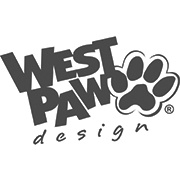 West Paw Design is a world-class manufacturer of high-quality pet toys, beds, and apparel based in Bozeman, Montana. Founded in 1996, 100% of West Paw Design's products are manufactured in the U.S. using nontoxic, organic, or recyclable materials and are sold largely through independent retailers.
West Paw Design is a world-class manufacturer of high-quality pet toys, beds, and apparel based in Bozeman, Montana. Founded in 1996, 100% of West Paw Design's products are manufactured in the U.S. using nontoxic, organic, or recyclable materials and are sold largely through independent retailers.
Business Challenges
Manufacturing in the U.S. creates lots of challenges for West Paw, especially when it comes to battling the lower prices offered by its competitors who typically make or source their product from overseas. While the business had been largely successful over the long run, it began to lose money in 2012 – a crisis that triggered the firm’s founder, Spencer Williams, to turn to the GGOB for answers.
Open-Book Solutions
Williams was just 23 back in 1996 when he bought an existing small business that made dog and cat toys and turned it into his own, which he renamed West Paw Design. “I was too young to know what I was doing,” says Williams, “but I wanted to do something that involved hands-on manufacturing in a neat industry connected to something I love, pets.”
Williams soon realized that he had entered a business where most of his competitors were looking overseas to manufacture their products – which forced him to operate as lean as possible and to be smart about what products his company made.
Williams says that open-book management was always part of the culture because, as a small business in a single location, people worked in such close proximity to each other. “There was nothing to hide,” he says.
But as the business has grown from 5 associates to 75, the business transparency challenge was magnified – especially because he wanted to find a way to distribute the leadership and decision-making beyond his own shoulders. While he continued to share total revenues and profits with his team, he knew he needed to do more.
“People can’t make decisions if they don’t have all the information,” says Williams. “I wanted to find a way to give them the autonomy to make good choices on their own.”
When he realized that the company was on track to lose money in 2012, Williams realized it was time to truly open up his company to his associates. “I remember that it was around October and I started putting Post-It easel pads in the break room listing out our revenues, costs, and net profits,” says Williams. “I wanted to give people a sense of how bad it was going to be. It wasn’t an easy decision to make but I wanted everyone to know how urgent it was for us to turn things around.”
Hoping to build on that lesson, Williams worked with his team and began implementing a financial literacy program in January 2013 as the first step in fully rolling out the GGOB system within the company.
Since then, West Paw’s associates have become more engaged with their contribution to the larger picture by evaluating their day-to-day tasks and creating and implementing procedures that directly affect the bottom line – which has helped drive profitability.
Most recently, the West Paw team has instituted high impact planning (HIP) to get every associate engaged in marketing and sales decisions and the chance to thoroughly understand what priorities are being worked on and how their role in the process matters.
“HIP has fit really well in our open planning process,” says Williams. “It’s really changed things for me. I now feel freer at expressing my opinion as just someone in the room. I also talk a lot more about financial trends because I know people will understand what I’m saying.”
Next up for Williams and West Paw is working on implementing additional MiniGames to help drive down costs and drive up their critical number—profit before tax.
Other Articles You Might Like:
.png)













.png)

